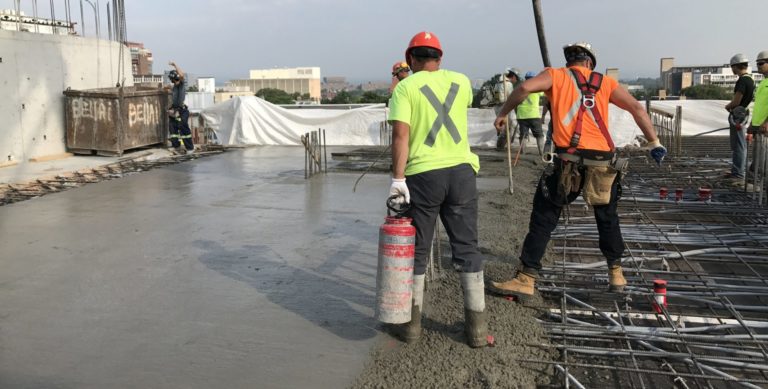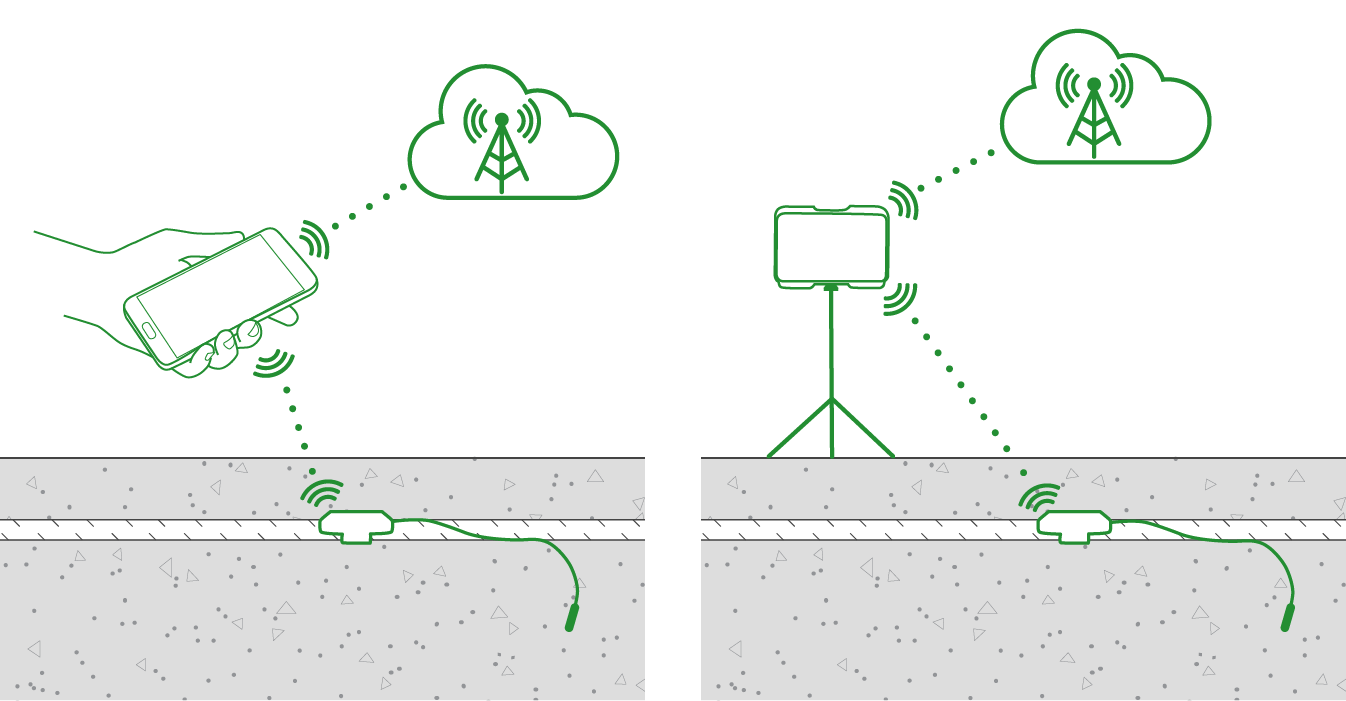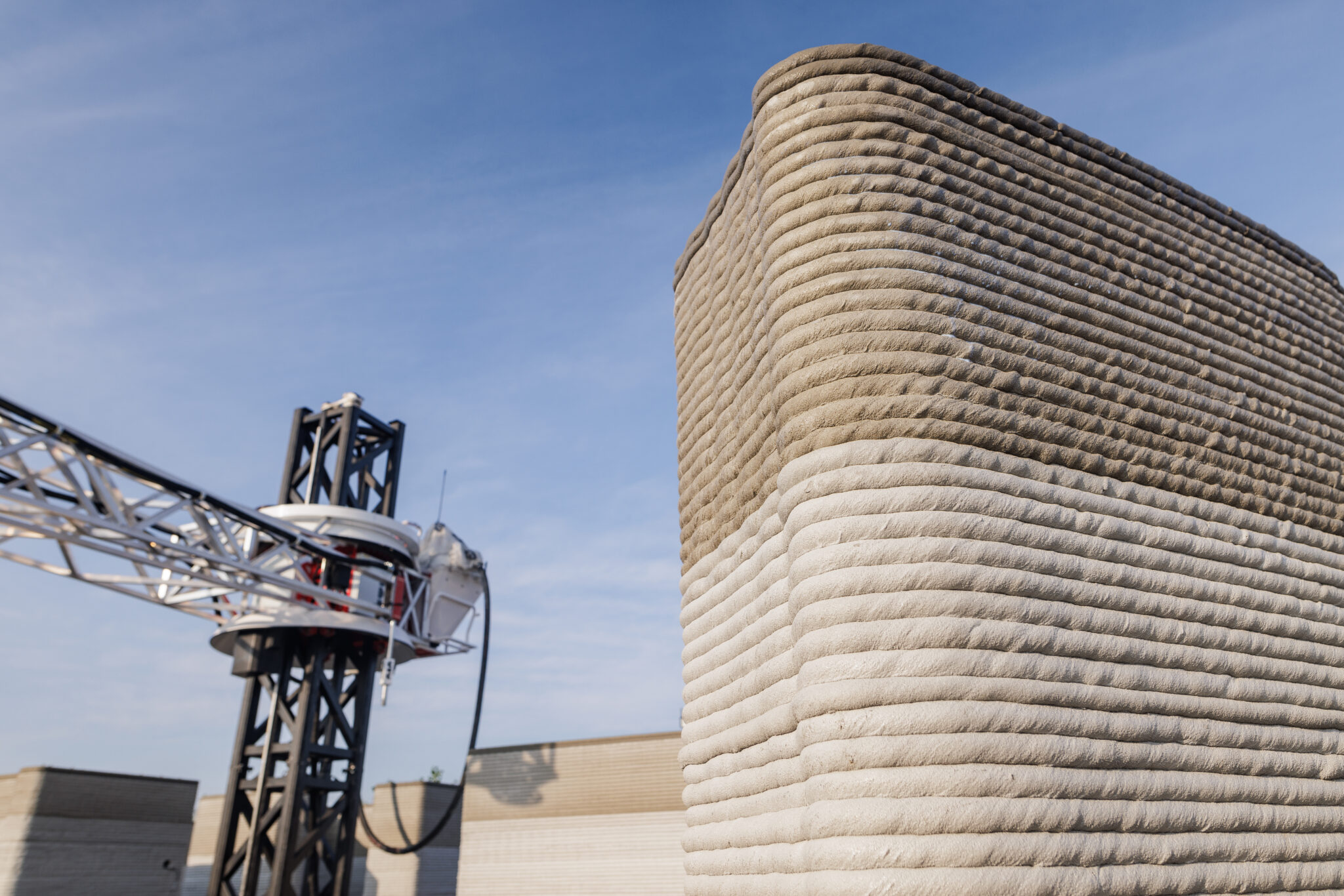As we build concrete structures, it is important to know the ability they have to withstand compressive loading and to find ways to improve it. Therefore, this blog will delve into the advantages of three practical curing techniques to enhance the compressive strength of concrete.
Explore 12 Futuristic Technology Trends Solving Concrete's Biggest Challenges.
What Is Concrete Curing?
Concrete curing is the process of maintaining adequate moisture in concrete within a proper temperature range in order to aid cement hydration at early ages. Hydration is the chemical reaction between cement and water that results in the formation of various chemicals contributing to setting and hardening. Some of the factors that affect the hydration process are the initial concrete temperature, the ambient air temperature, the dimensions of the concrete, and the mix design. Therefore, for the success of this process, in-situ concrete must have sufficient moisture and a temperature that favours this chemical reaction at a rapid and continuous rate.
The American Concrete Institute (ACI) recommends a minimum curing period corresponding to attaining 70% of the compressive strength of concrete. The specifications say that this can happen after seven days of curing. However, 70% strength can be reached quickly when concrete cures at higher temperatures, or when certain admixtures are used in the concrete mix. Similarly, more time may be needed for curing when concrete or ambient temperatures are lower. Typically, the ideal curing temperature would be 20°F or 68°F.
Why Is Concrete Curing Important?
Careful control of moisture and temperature of your in-situ concrete during curing is an essential part of quality control and quality assurance of your concrete structure. Proper curing techniques will prevent in-situ concrete from drying, shrinking, and/or cracking. This ultimately affects the performance of your structure, particularly at the cover zone. Curing of concrete should occur as soon as it has been placed. It is also essential that monitoring of concrete curing conditions take place continuously for seven days. If the water evaporates from the concrete before it has attained its maximum strength, there will not be enough remaining to fully hydrate the cement and achieve the maximum compressive strength of concrete. This is especially true during extreme weather conditions because various environmental factors can affect the concrete slab. Thus, the strength development of your concrete can be compromised.
3 Techniques for Efficient Concrete Curing
Many factors affect the rate at which water evaporates from freshly placed concrete. This includes air temperature, humidity, concrete temperature, and wind speed. As a result, there are many techniques to help concrete retain moisture at early ages. These methods can:
- Maintain the presence of water in the concrete during the early hardening period,
- Reduce the loss of water from the surface of the concrete, and
- Accelerate concrete strength gain by supplying heat and additional moisture.
The method (or combination of methods) chosen depends on factors such as availability of curing materials, size, shape, age of concrete, production facilities (in place or in a plant), aesthetic appearance, and economics. As a result, curing often involves a series of procedures used at a particular time as the concrete ages. The degree of concrete hardening will determine the timing of the procedure in order to avoid damaging the concrete surface.
1) Maintaining Moisture
Ponding and immersion
Typically, ponding cures flat surfaces like pavements and floors because the earth and sand surrounding the concrete surface can retain a pond of water. Ponding is an ideal method for preventing loss of moisture from the concrete; it is also effective for maintaining a uniform temperature throughout the concrete. Immersion of a finished concrete element is commonly used for curing test specimens.
Measure accurately the strength of your concrete with our strength monitoring solutions.
Spraying and fogging
Spraying and fogging are useful when the ambient temperatures are well above freezing, and the humidity is low. Fog mist is applied through nozzles or sprayers to raise the relative humidity of the air over flatwork, thus slowing evaporation from the surface. Fogging works to minimize plastic shrinkage cracking. If sprinkling occurs at intervals, burlap or similar materials could prevent the drying of concrete between applications of water. Otherwise, alternate cycles of wetting and drying can cause surface cracking.
Saturated wet coverings
For the curing process, it is common to use wet coverings saturated with water such as burlap, cotton mats, rugs, or other moisture-retaining fabrics. The materials should be placed as soon as the concrete has hardened enough to prevent surface damage. They should remain constantly wet so that a film of water stays on the concrete surface throughout the curing period.
Left-in-place forms
Left-in-place forms usually provide satisfactory protection against moisture loss for formed concrete surfaces. The forms usually remain in place as long as the construction schedule allows. If the forms are wooden, they should retain moisture, especially during hot and dry weather.
2) Prevent Concrete Drying: Techniques to Reduce Moisture Loss
Covering concrete with impervious paper or plastic sheets
Impervious paper and plastic sheets can be applied on thoroughly wet concrete to reduce concrete drying, such as polyethylene film. This material is a lightweight, effective moisture retarder that is easy to apply. During placement, the concrete surface should be hard enough to prevent surface damage.
Applying membrane-forming curing compounds
Membrane-forming curing compounds function to retard or reduce the evaporation of moisture from concrete to prevent concrete drying. They can be clear or translucent and white-pigmented. White-pigmented compounds are recommended for hot and sunny weather conditions to reflect solar radiation. Curing compounds should be applied immediately after final finishing and must comply with ASTM C3094 or ASTM C13155.
3) Accelerating Concrete Strength Gain
Live steam
Live steam and high-pressure steam are the two methods of steam curing. The temperature for live steam should be kept at about 140ºF or less until the desired concrete strength is achieved.
Heating coils
Heating coils usually work as embedded elements near the surface of concrete elements. Their purpose is to protect concrete from freezing during cold-weather concreting.
Electrical heated forms or pads
Precast concrete producers use electrical heated forms or pads primarily.
Concrete blankets
Concrete insulation blankets serve to cover and insulate concrete surfaces subjected to freezing temperatures during the curing period. When using concrete blankets, we must make sure that the concrete is hard enough to prevent surface damage.
Everything you need to know about cold weather concreting here
Curing for Compressive Strength of Concrete
Freshly mixed concrete normally contains more water than the requirement for cement hydration. However, excessive loss of water by evaporation can delay or prevent adequate hydration, especially on the surface of the slab. These techniques for retaining the moisture of in-situ concrete are therefore important for proper hydration so that concrete can gain sufficient compressive strength.
Curing directly influences the quality of your overall structure. Strength gain is rapid at early ages but continues more slowly for an indefinite period. Proper curing will increase durability, strength, water-tightness, abrasion resistance, volume stability, and resistance to freezing and thawing.
What Is Concrete Maturity?
Maturity is a non-destructive approach to testing concrete that allows you to estimate the early-age and compressive strength of in-place concrete in real-time. Adopting the maturity approach in your jobsite eliminates the need for concrete cylinder break tests, allowing you to greatly optimize your schedule.
ASTMC1074, the standard practice for maturity, defines the method as “a technique for estimating concrete strength that is based on the assumption that samples of a given concrete mixture attain equal strengths if they attain equal values of the maturity index.”
In other words, maturity is a value that represents the progression of concrete curing. The maturity index value considers concrete temperature and curing time. As a result, mix calibration is required to implement this concept in a project. The goal of the calibration is to determine a relationship between maturity and strength for a specific mix.
A Sensor for Temperature and Strength
The process of placing and curing concrete on-site requires precise temperatures to avoid damage to the structural integrity of the concrete. With SmartRock®, a wireless concrete temperature and strength measurement sensor, you no longer have to worry about ambiguous wait times. SmartRock delivers real-time, accurate data to your mobile device every 15 minutes with the free SmartRock app.
This wireless sensor allows team members to work efficiently without worrying about protruding wires or searching for them under heating blankets when relying on external data loggers. The sensor is fully embedded in the concrete and secured on the rebar within the formwork. SmartRock continuously monitors the effect of ambient temperatures and the external environment on your in-situ concrete. This makes it easier to control concrete curing and ensure optimal conditions for the gain of compressive strength of concrete. In addition, real-time results allow contractors to optimize the heating process, decrease energy costs, and save time in their project schedule. This is possible by knowing when concrete has gained sufficient strength for subsequent construction operations, such as formwork removal or post-tensioning.
Read how S&F Concrete Contractors’ used SmartRock to monitor concrete curing
Editors Note: This post was originally published in January 2019 and has been updated for accuracy and comprehensiveness in May 2023.












9 Responses
Great insights on the importance of curing techniques for achieving optimal compressive strength in concrete! I never realized how crucial the initial curing phase is for long-term durability. Thanks for sharing these valuable methods!
It is a pity that you forgot about curing of high-strength / high-performance concrete, for which conventional methods of curing based on maintaining moisture, either by supplying water from outside or by sealing the surface to prevent evaporation, do not work. This type of concrete is prone to cracking at an early age due to self-desiccation and autogenous shrinkage. The solution is to apply so-called internal curing. You are welcome to refer the article “Novel techniques for concrete curing” published in Concrete International, 2005, 27(9):39-42.
Hello, thank you for your interest and for sharing this information regarding UHPC. The purpose of this article was to cover conventional techniques for curing concrete, however, this is a great proposition for a new post, thanks!
Curing is so important and you highlighted it very well in this article.
It was interesting when you talked about how concrete needs to retain some moisture in order to reach its optimal level of compressive strength. My husband and I are looking for a ready-mix concrete supplier so we can install a driveway for the rural home we purchased at the end of last month. Learning about curing time helped me feel a lot more prepared to ask the right questions once we find a concrete supplier!
How much curing days required for slab after casting? And can water curing is sufficient for concrete members
“Thank you for your question
The recommended curing time on any concrete element will depend on internal and external factors such as mix proportions, size and shape of the slab, ambient conditions, specified strength, etc. For instance, is this slab submitted to direct sunlight, dry environment and wind incidence? In this case, the chosen curing procedure is extremely important.
ACI 301 recommends a minimum curing period comparable to concrete attaining 70% of the specified compressive strength. Typically this target is obtained within 7 days, but it varies from mix to mix. The primary focus when curing a slab is to prevent shrinkage cracks related to loss of water due to evaporation. Therefore, it is always recommended to carefully evaluate the environment where your slab/concrete element is located.
Furthermore, in some cases such as concrete pavements or industrial floors, it is hard/nearly impossible to maintain a layer of water on the concrete to provide curing conditions. In such cases, tarps or chemical curing can be used. By mindfully selecting the most appropriate curing procedure, one can prevent cracks and ensure more durability in the long run.
For more information about curing procedures, refer to the following link: https://www.cement.org/learn/concrete-technology/concrete-construction/curing-in-construction
Amazing post, thank you for sharing this knowledgeable post, really this is very helpful.
Excellent article, very successful, where it is clearly explained not only the techniques but also the importance of curing